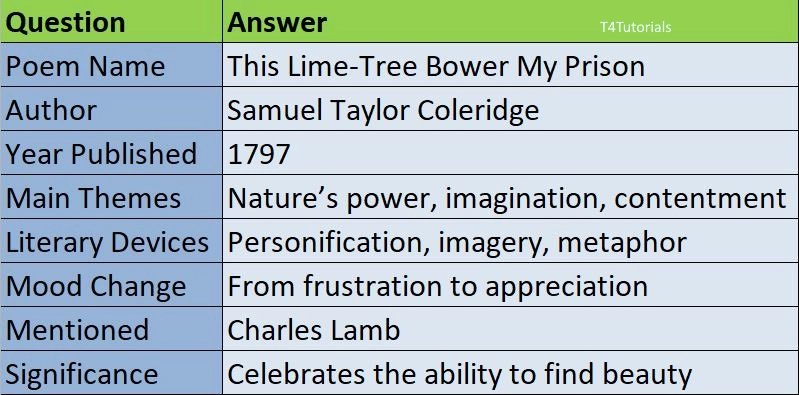Summary:
“This Lime-Tree Bower My Prison” is a poem written by Samuel Taylor Coleridge in 1797. The poem was composed after Coleridge was unable to join his friends, including Charles Lamb, on a countryside walk due to an injury. Initially, he feels frustrated and confined, referring to the lime-tree bower as his “prison.” However, as the poem progresses, he begins to appreciate the beauty of nature around him. Through imagination, he envisions the sights his friends are experiencing, ultimately finding joy and contentment in his surroundings. The poem explores themes of nature’s transformative power, the role of imagination, and the connection between human emotions and the natural world. Coleridge highlights how even a small and seemingly insignificant space can become a source of beauty and inspiration. The poem ultimately conveys a sense of gratitude, teaching that joy and appreciation can be found even in unexpected circumstances.
10
Score: 0
Attempted: 0/10
Subscribe
| Question | Answer |
| Poem Name | This Lime-Tree Bower My Prison |
| Author | Samuel Taylor Coleridge |
| Year Published | 1797 |
| Main Themes | Nature’s power, imagination, contentment |
| Literary Devices | Personification, imagery, metaphor |
| Mood Change | From frustration to appreciation |
| Mentioned Friend | Charles Lamb |
| Significance | Celebrates the ability to find beauty anywhere |